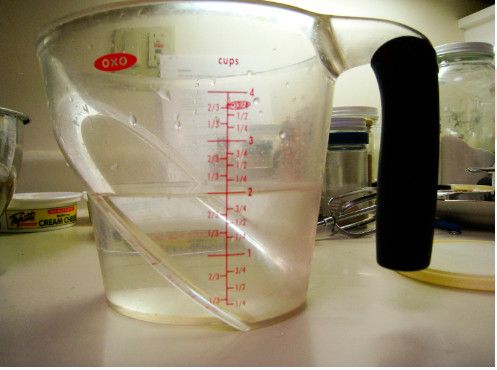
A common question we frequently get asked which https://emilybrydon.com/how-many-1-4-cups-are-in-a-cup/ we would recommend to our customers; this is a tricky question as it depends on the heat of drink you intend to use. We stock a wide range of items from single-wall plain paper cups, to our latest triple wall ‘Ultimate’ hot cups. The primary difference is the insulating properties of the specific cup type.
Our Plain White or Mocha Single wall hot cups are perfect for warm drinks; however piping hot coffee would perhaps be rather uncomfortable to hold without the use of a cup sleeve (available separately). Due to their single-wall construction there is no additional layer to insulate the heat of the beverage.
Double wall and hot ripple cups are specifically designed to withstand much high tempuratures, the dual layers work in a similar way to a thermos flask; trapping air and isolating the customer’s hand from hot drinks. In addition to this, the extra cup strength is ideally suited to ‘coffee on the go’.
With different high street coffee chains and drinks providers favouring different disposable cup materials, it is interesting to find out which is the most effective insulator. Perhaps the most appropriate way to discuss the insulating properties of a paper cup is to compare it with another frequently used takeaway cups, such as the common expanded polystyrene type. This can be done by carrying out a simple test to show whether the polystyrene or paper version kept the liquid it contained hotter for the greatest length of time.
Paper cups vs Polystyrene cups
The heat retention test involves putting 200 ml of very hot water into a polystyrene cup and the same amount into a paper hot drink cup to find out which is the better insulator. For a wider comparison, you could also introduce a plastic cup into the equation to reveal how its insulation properties measure up. We all know each of these hot cups will provide a specific level of insulation, but this test will help show which is the best way to keep liquids warm.
How to Test the temperature
You can use a thermometer to test the temperature of the liquid. Taking a temperature reading every minute for at least ten minutes, then again around 20 minutes and 30 minutes, will help to show whether the paper cup is indeed the best insulator. You can record these readings as a graph if you wish to make the results clearer.
Heat retention
In an extremely similar test, cup and food container specialist Contexpan discovered that the liquid in both cups dropped in temperature very fast during the first five minutes, from around 100 degrees centigrade to around 90 degrees. However, at this point, the liquid in the polystyrene cup cooled at a slightly slower rate than the paper version, remaining at around 80 degrees after 25 minutes compared with the liquid in the paper cup, which had dropped to around 70 degrees.
The results
The findings suggest that the polystyrene cup is the better insulator, with the paper cup in second place. A third cup, a plastic cup, was used in the Contexpan test and this presenting inferior insulation properties, with the water temperature falling to below 70 degrees centigrade after 25 minutes. However, some catering supplies companies are now using double-layered disposable paper cups with an air pocket in between to trap the heat and provide an extra layer of insulation. Further tests would need to be carried out to discover whether this gives the paper cups the edge over polystyrene ones.
From the findings above, we would most likely expect the greatly increased insulation of ripple/weave paper cups to put them in first place with this sort of experiment. The ripples act like a thermos flask, greatly increasing the heat retention of the cups. Further tests are required to conslusively prove this statement however.
Biodegradable Paper Cups
Of late there has been a lot of emphasis on the use of Biodegradable hot drink paper cups. This has become a issue as traditional PE coated hot drink cups use non-renewable materials for their inner lining. Obviously this lining is required to make the cups watertight, so the only way to make paper coffee cups more eco-friendly is to replace the PE lining with an eco-friendly alternative.
The new range of Biodegradable Paper Cups use a PLA (Polylatic acid) lining instead of the traditional PE (Polyethylene) coating. Previously PLA has been mainly used on Plastic Glasses designed for cold drinks. This is because PLA would begin to dissolve if it touched a hot drink. The latest varieties are temperature treated to make it suitable for use with piping hot drinks; this advance has made the coating appropriate for use with paper coffee cups.